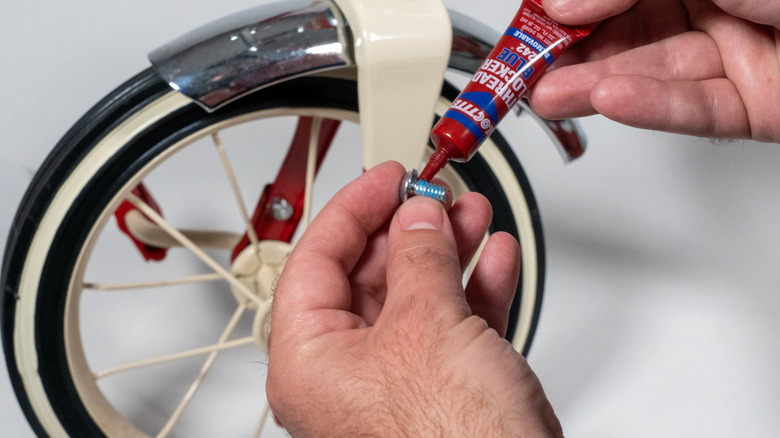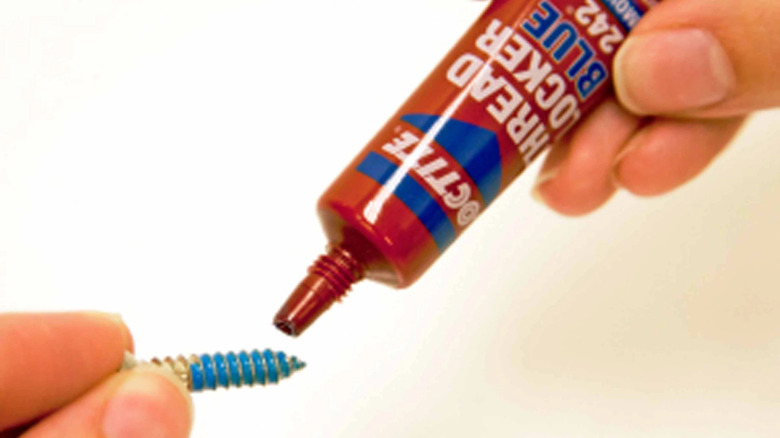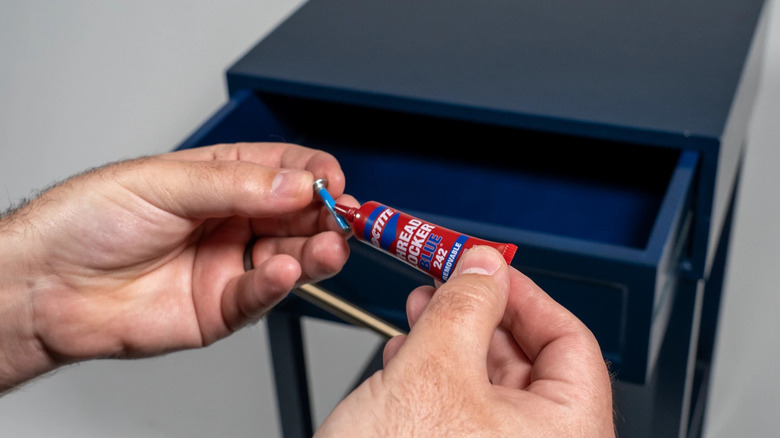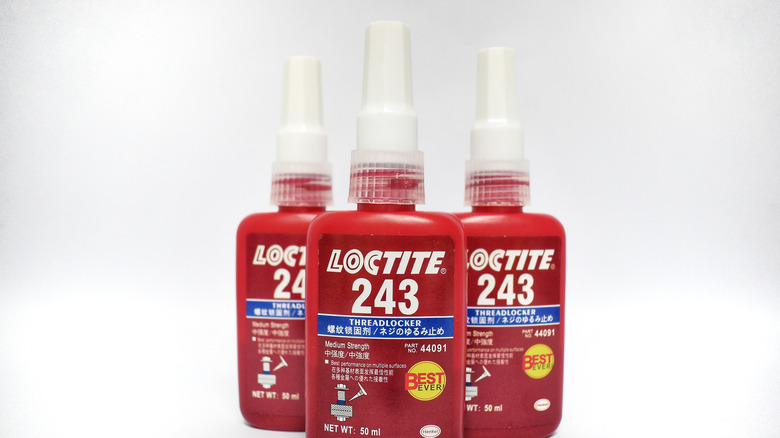Loctite 242 Vs. 243: What's The Difference?
If you're looking to keep the various fasteners in your latest mechanical project firmly where they're supposed to be, a few drops of Henkel's Loctite threadlocker can do you some good. These liquid adhesives can be dropped into the threads of fasteners like bolts, nuts, and screws, forming a protective, vibration-resistant cushion to shore them up against excessive physical force. The only question is exactly what kind of Loctite you want for your needs.
Henkel has over 30 different Loctite products on offer, each with their own intended usage for different kinds of materials and color-coded strength. Because some of the differences between these products are subtler than others, it can be tricky to determine which one is right for you. For example, what's the difference between Loctite 242 and Loctite 243, a couple of Loctite adhesives that, at least at a casual glance, look completely identical? While these two particular Loctite products are part of the same family, there are a few small differences that make them ideal for slightly different situations.
Both types are medium-strength blue Loctite
Before we get into the differences between Loctite 242 and 243, let's first cover their major similarity. Specifically, both of these Loctite products are part of the same group, that being blue Loctite. Loctite products come in four color codings: blue, green, purple, and red. Each of these groups have different overall properties, and are intended for vastly different jobs. Green Loctite is intended for wicking into narrow gaps, red Loctite is for maximum-strength hold, and so on.
So what does blue Loctite, and by extension 242 and 243, have going for it? Blue Loctite is the medium-strength category, an adhesive for holding fasteners in place without having it be semi-permanent like red Loctite. Blue Loctite will hold your fasteners down, but its construction is simple enough that it can be removed with a sturdy wrench and a bit of elbow grease, as opposed to the stronger Loctite products which need to be heated and removed with much heavier force.
Besides the general properties of blue Loctite, both 242 and 243 cure in the same period of about 24 hours, they're both safe to use for metal threads from M6 to M20, and they both show positive when under a UV light.
Loctite 242 fixes faster and is easier to remove
If you're in a bit of a hurry and want your Loctite to both cure faster and come apart with less physical force, then Loctite 242 is the adhesive you want. If you've got fasteners that you'll be planning on removing in the near future, 242 is a bit more accommodating than 243.
Compared to its sibling, Loctite 242 fixes in place a bit faster. The adhesive is engineered to be thixotropic, which means it doesn't migrate around after you apply it. As soon as you apply Loctite 242, it will swiftly stick in place, ensuring it doesn't flow down the fastener's threads and get into any spots you'd rather not have it.
Additionally, a fastener threaded with Loctite 242 is slightly easier to remove from its housing than one with 243, relatively speaking. A fastener with 243 applied requires about 20/7 Newton meters of breakaway/prevail torque in order to pry loose. A fastener with 242 applied, on the other hand, requires only 17/6.8 Newton meters to loosen. You'll still need a good wrench and a strong hand either way, but a fastener with 242 won't take quite as much effort to pry out.
Loctite 243 is primerless and has greater temperature resistance
If you're looking for a blue Loctite product that will hold a bit firmer to its applied fasteners to endure the elements for a bit longer, Loctite 243 will weather the storm for you with a bit more confidence than its sibling.
Loctite 243's main feature is that, unlike 242, it's completely primerless. No matter what kind of metal material you're applying it to, even passive substrate metal, you don't need to apply any particular treatment or chemical before using 243. You can even use it on oil-coated fasteners, fresh out of the box, without needing to clean the fasteners or remove their coatings beforehand. Just apply the 243, and you're off to the races.
Additionally, compared to 242, Loctite 243 has a slightly greater temperature resistance, which can be helpful for securing fasteners in hot environments like an engine. Loctite 242 can realistically handle temperatures up to 150 degrees Celsius, while 243 goes the extra mile and stands tall against temperatures of up to 180 degrees Celsius. That's about 356 degrees Fahrenheit.



